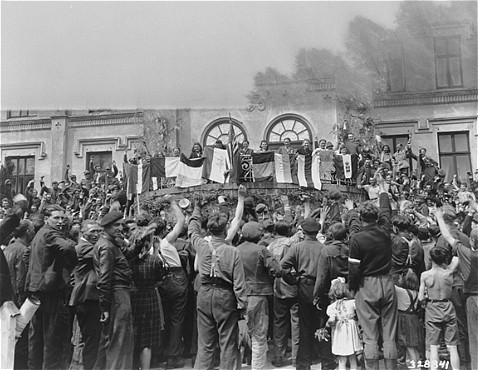|
"Displaced Persons" (DPs) Take Part in a Flag Ceremony (1945)
When the Allies marched into Germany in early 1945, they found some 6.5 to 7.5 million "Displaced Persons" (DPs) in the area that later became the three Western occupation zones. The term "DP" encompassed all "non-German" civilian persons who had fled, been expelled, or forcibly removed from their homeland in the course of the Second World War, in particular concentration camp and forced labor survivors. Nearly 6 million DPs were repatriated by the end of September 1945. The Western Allies set up DP camps primarily in Germany, but also in Austria and Italy for the over 1 million DPs who, for reasons ranging from fears of continued racial and religious persecution to new political threats, could not be repatriated, and needed to be cared for until resettlement or opportunities for immigration could be found. The first inhabitants of these camps were concentration camp survivors and forced laborers who had been liberated on German soil. In the picture, DPs from various countries take part in a flag ceremony at the Hagenow Camp in Mecklenburg on July 4, 1945. Photo by Ralph Forney.

|


